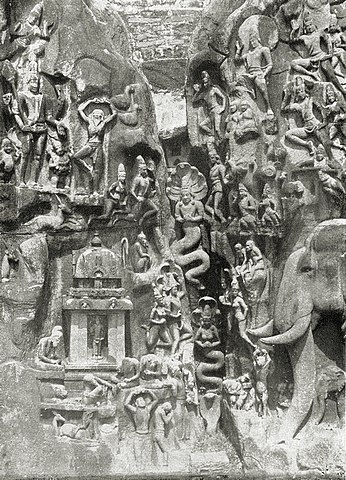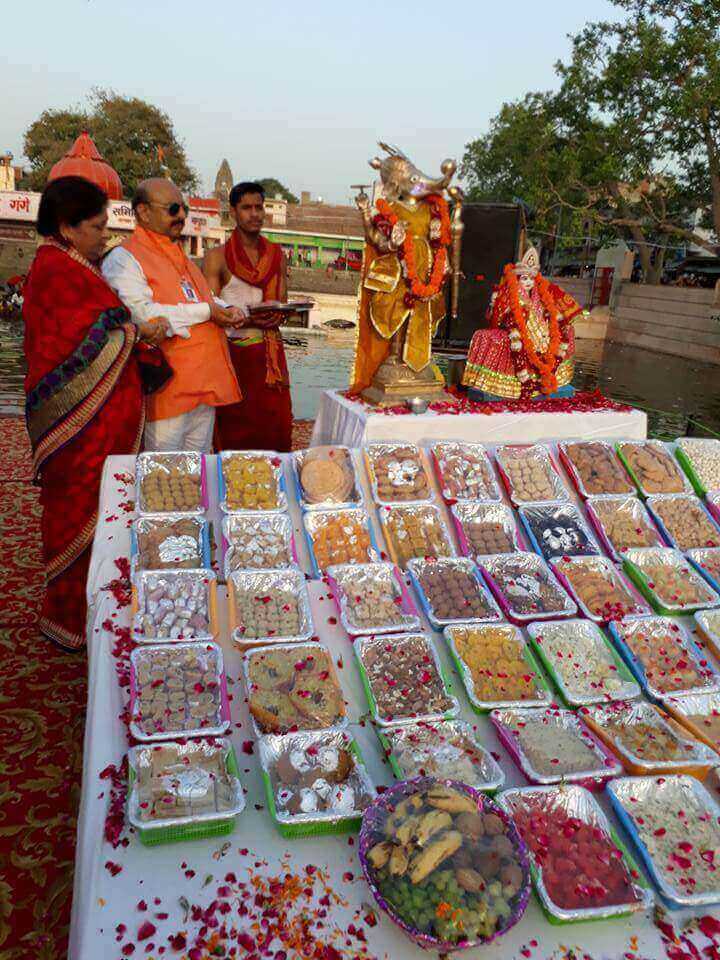Ganga Dussehra
Ganga is the lifeline of North India. It is the longest river, originating from the Himalayas and passing through five states, it covers a distance of about 2525kms before merging into the sea. It is a symbol of faith, hope , culture and sanity, as well as a source of livelihood for millions since time immemorial. Many important cities and pilgrim centers are located on its banks.
Ganga Dussehra is an important day for all Hindus, especially for those living near the river. They visit the river to take a dip in the holy water. It is an auspicious day for giving donations to the poor . In places like Haridwar and Varanasi, Ganga-aarti is performed daily in the evenings, but on this day the Ghats are beautifully decorated and a special aarti is performed. This is the hottest month, it is considered a good act to distribute cold water or Sharbat to poor people and travelers. People would distribute, earthen pots that were filled with sharbat, a hand fan and some fruits along with each pot, to brahmins and poor people. This sweet tradition is now almost forgotten.

According to the Hindu mythology, Ganga once resided in Heaven with the Gods. Due to the severe penance performed by King Bhagirath, she descended on earth to rid the souls of his ancestors of a curse. The day she descended is celebrated as Gangavataran. The festival falls on the tenth day of the Shukla Paksha of the month of Jyestha (May-June). Since it falls on the tenth day, it is also known as Ganga dussehra.
Bhagirath was a legendary king of the Ikshvaku dynasty. The Ikshvaku was the most powerful clan that ruled in ancient India. Many of the greatest kings including Lord Ram were born in this dynasty. The story of Ganga’s descent on Earth Begins from the time when Raja Sagar was the king of Ayodhya who was a very powerful king.
As per the tradition of that time, King Sagar had planned an Ashvamedha Yagna, after which he would become the supreme power. Indradev, the king of Gods became jealous of him. When all the preparations were done and the horse was ready for the journey, Indradev stole the horse and hid it in Sage Kapil’s Ashram.
King Sagar had 60,000 sons. They went in search of the horse and when they found it in the ashram, they blamed the sage for the theft. The Sage was in meditation. He was disturbed and furious, with a fiery glance he burnt them all to ashes. When the princes did not return, the king sent his Grandson Anshuman in search of his sons. When Anshuman reached the Sage’s ashram, he was deeply moved on seeing the fate of his uncles. On his request, the Sage told him that his Uncle’s souls would attain peace only if the ashes were washed by the water of Ganga. On hearing this Anshuman went to the Himalayas to pray to Lord Brahma. After Anshuman, his son Dilip also prayed for several years but it was his son Bhagirath who was at last successful in bringing Ganga on Earth.

On my visit to Aditeerth Soronji, we came across a site known as Bhagirath gufa. It is located over a small mound and is believed to be the place where Raja Bhagirath performed great penance. According to the village folklore, Kapil Muni had also used this place for meditation. A stream that flows nearby is called Burhi ganga. Earlier there were statues of a sage and the sagar princes which were stolen before independence. In Soron, which is also a central location in Varah Avatar stories, Ma Ganga is worshipped along with Varah Avatar, with Chappan Bhog.
Ganga is the most important river of India. It is considered a Goddess and revered as Ma Ganga. Its water is ‘Holy’ and is sprinkled on all auspicious occasions and pujas. A dip in the holy waters of Ganga is said to wash away all sins. It is known by various names as Bhagirathi, Jahnavi, Hooghly and Padma.
Ganga Dussehra, a festival that is now only remembered by people living near rivers, tells us the story about how small mistakes could take many generations of hard labor to rectify. These days when I see how polluted rivers and riverbanks are, when I see dead fishes with plastic in their stomach, I sometimes wonder, how many generations will it take to repair the damage that we caused in this life.